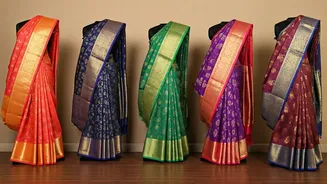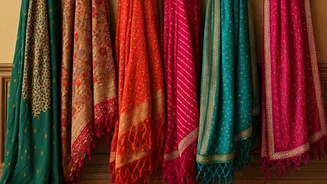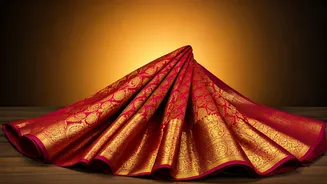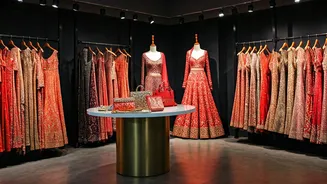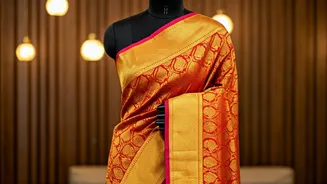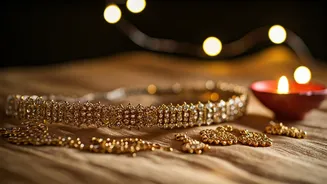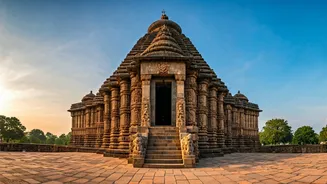Cultural Crossroads in Design
The fashion industry frequently finds itself at the intersection of various cultural influences, with Indian designs becoming a prominent source of inspiration.
Designers are increasingly integrating Indian elements, like the intricate 'navratna' motifs and diverse embroidery techniques, into their collections. This exchange isn't merely a trend; it's a profound dialogue between cultures, where traditional craftsmanship meets contemporary design sensibilities. These cultural exchanges are transforming the industry, showcasing the global appeal of India's rich artistic heritage and allowing designers to celebrate diversity through their work. This leads to the creation of innovative and culturally rich designs, which appeal to a global audience interested in unique aesthetics.
Artisans: The Creative Force
At the heart of Indian-inspired fashion are the artisans, who are the true custodians of traditional craftsmanship. These skilled individuals possess a deep understanding of techniques like embroidery, weaving, and embellishment. Their dedication ensures the preservation of these art forms while pushing boundaries to meet contemporary trends. Designers often collaborate with these artisans, valuing their expertise and ability to bring traditional techniques to life in modern designs. The relationship between designers and artisans is mutually beneficial, leading to the creation of pieces that respect the past while embracing the future. This synergy results in the production of unique, high-quality garments that tell a story, reflecting both heritage and innovation. This collaboration is pivotal in maintaining the legacy of Indian craftsmanship in the global fashion scene.
Embroidery: A Textile Legacy
Embroidery stands as a distinctive expression of India's textile heritage, with a rich diversity of styles and techniques that reflect regional variations. From the complex patterns of Zardozi to the delicate mirror work, each technique tells a unique narrative. Designers find themselves particularly drawn to these intricate forms, appreciating the time and skill involved in creating such detailed designs. The use of embroidery gives designs a tactile quality and visual appeal, elevating them into artworks. In the fashion context, these techniques are more than mere decoration; they represent a fusion of history, culture, and artistry, which enables them to transcend the ephemeral nature of fashion trends and become enduring symbols of cultural exchange.
Global Appeal of Indian Style
The incorporation of Indian elements in fashion has reached a global audience, resonating with those who appreciate cultural diversity and artistic expression. Designers who feature Indian-inspired pieces often report positive reception, with buyers and consumers captivated by their originality and beauty. This trend signals a shift in consumer preferences towards garments that possess depth and storytelling. It showcases the global interest in understanding and celebrating different cultures. This surge in popularity helps to drive greater awareness and appreciation for Indian craftsmanship, promoting the preservation of these traditional art forms. The combination of cultural richness and modern design sensibilities ensures that these garments remain both relevant and desirable worldwide.


